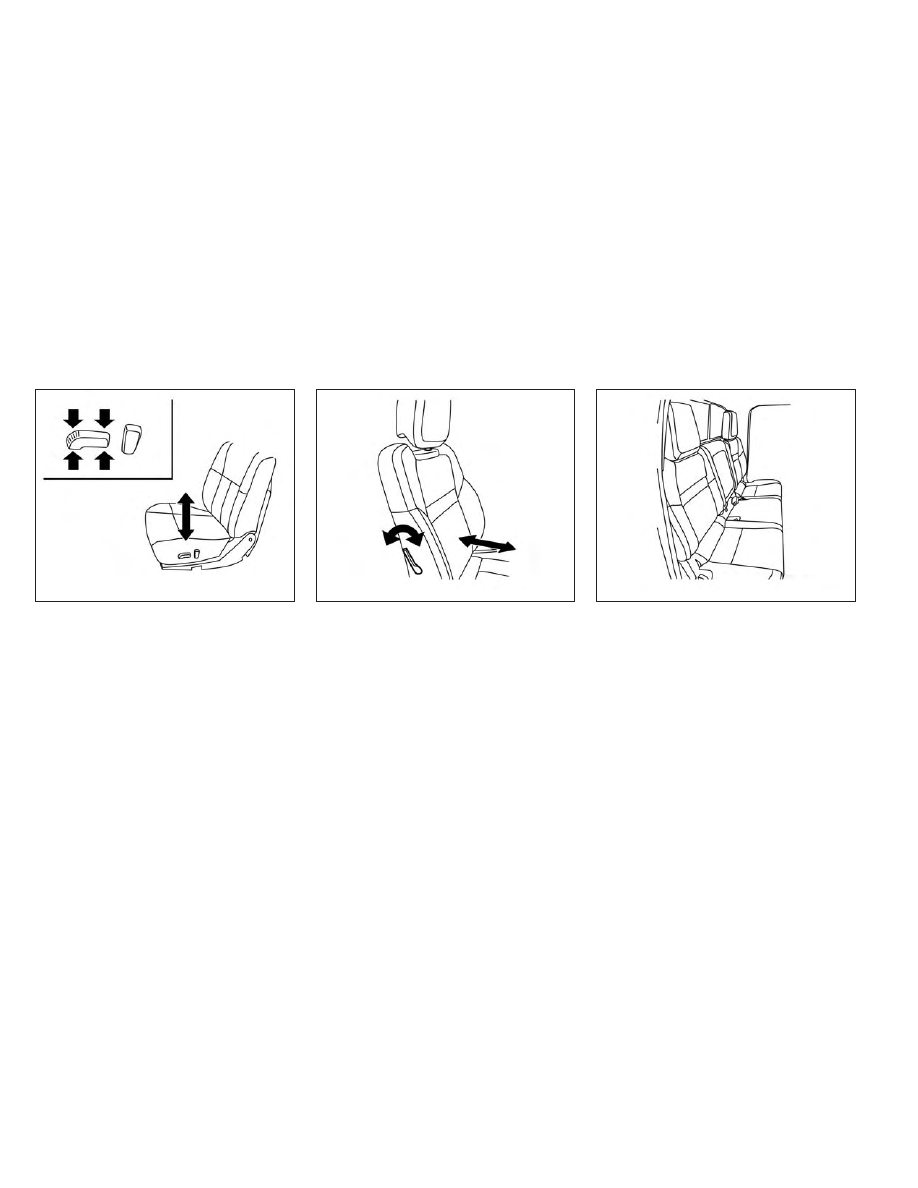Nissan Frontier (2022 year). Manual in english - page 2

Seat lifter (driver's seat)
Move the switch as shown to adjust the
angle and height of the seat cushion.
Lumbar support (driver's seat)
The lumbar support feature provides ad-
justable lower back support to the driver.
Move the lever forward or backward to ad-
just the seat lumbar area.
REAR BENCH SEAT (if so equipped)
The rear bench seat is non-adjustable.
However, the seats can be folded up and
folded to lay flat. For additional information,
see “Flexible seating” (P. 1-7).
LRS3442
LRS3430
LRS3431
1-6
Safety-Seats, seat belts and supplemental restraint system